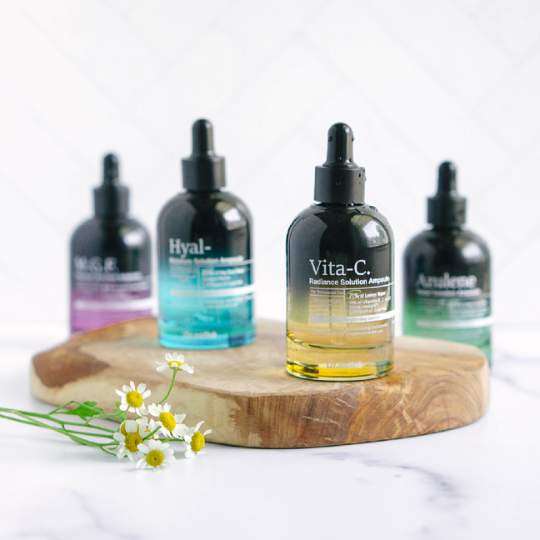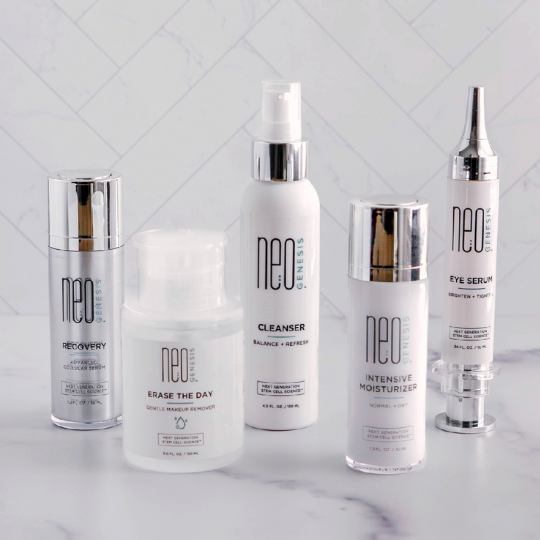Did you know retinol is one of the most scientifically researched skincare ingredients? Yet many don't know the purpose it serves in skincare or how to use it properly. Are you confused about the differences between Retinols, Retinoids, and Tretinoin? Do you wonder if it's something you should incorporate in your skincare? Read on to find answers to these questions and more!
Learn the Differences
Retinol and Tretinoin are similar ingredients (both are forms of Vitamin-A) but have key differences. Tretinoin, like Retinol, is a retinoid. Unlike Retinol, Tretinoin (Retin-A) is a concentration of pure retinoic acid. This makes Tretinoin very strong and often too harsh for some skin types!
Retinol, on the other hand, is converted into retinoic acid by the enzymes in the skin. It then is gradually absorbed by your skin. This makes it more tolerable to the skin but does take longer to produce results. Yet, it does so with less side effects with the right formulation.
Uses for Retinols and Retinoids
All retinoids are vitamin A derivatives. Retinoids are available in creams, gels and liquids, and are sold OTC that include retinol AND it is sold in prescription medications like tretinoin, adapalene, bexarotene, alitretinoin and tazarotene.The following are some of the uses for each topical retinoid.
- Retinol – acne, keratosis pilaris, wrinkles, hyperpigmentation
- Tretinoin – acne, keratosis pilaris, wrinkles, hyperpigmentation
- Adapalene – acne
- Tazarotene – acne, psoriasis
- Alitretinoin – Kaposi’s sarcoma
- Bexarotene – cutaneous T-cell lymphoma
If you choose the route of Tretinoin, you may find yourself facing the side effects. And if you don't know how to properly apply it, you will amplify these negative side effects.
Side Effects
Retinoids like Tretinoin are known to cause side effects making it difficult to use.
Side effects are:
- Redness
- Flaking
- Dryness
- Irritation
- Inflammation
However, when using a retinol (remember, it's not as strong), these side effects are considerably less but can still pose a problem if the formulation doesn't provide some form of encapsulation. Encapsulation is a delivery system that works with the skin to enable absorption without irritation. An example is Sleep On It Vegan Retinol which causes little to no side effects.
Proper Use
Some dermatologists don't inform users that Tretinoin should be applied 20 - 30 minutes AFTER cleansing. The reason is moisture makes the product EVEN stronger! Allow all moisture from cleansing, or the use of other products to thoroughly penetrate (20-30 minutes) before using Tretinoin to avoid making the inherent side effects worse.
If you want to follow retinol or retinoid with moisturizer, wait at least 10 minutes for a retinoid (it absorbs faster), and 20 - 30 minutes for retinol (it absorbs slower) to avoid diluting the product in the skin and sabotaging the benefits.
When using serums make sure the active ingredients will not increase side effects. For example, a product with a strong chemical exfoliating effect that may cause more flaking or drying, when used while undergoing retinol treatments. If you notice this happening, use these serums on the nights you are not using a retinol or retinoid product. Research shows however that Vitamin C and Retinol work well together.
It is very important to use a hydrating moisturizer (preferably water-based vs oil) to counter these negative side effects. A deeply hydrating moisturizer in the morning routine will help counter the negative side effects. A quality product for this would be NeoGenesis Intensive Moisturizer.
All forms of retinol must be applied at night because retinoic acid makes the skin more susceptible to UV rays which can cause photoaging and in rare cases blistering and sun burn.
Here's another tip you might not get from a dermatologist. Do not start out using a retinoid or retinol every single night. Start it by using it every other night. This allows the skin to adjust. Until your skin adjusts, use devices on the nights you're not using a retinoid or retinol.
If you're beginning to see results after a couple of weeks using it every other night, continue using it every other night. This means your skin is responding at this level. If you aren't yet seeing improvements, transition to every night.
If your skin is healthy and you're getting the desired benefits from your anti-aging skincare routine of cleanse, serums, devices, moisturizer, and SPF - you can use retinol less, but I still think Vitamin A boosts any anti-aging skincare routine.
Benefits
Though retinol has been found to be less effective than Tretinoin and other prescription retinoids, it DOES have benefits. For example, one study found reduced wrinkles after retinol application for 12 weeks; another that just seven days of retinol could increase collagen synthesis.
Research Article 1 | Research Article 2 | Research Article 3
Benefits include reduction in certain kinds of acne, keratosis pilaris, wrinkle reduction, increased collagen, and hyperpigmentation.
Summary
Retinoids like Tretinoin are pure retinoic acid and quickly absorbed in the skin making them very powerful. It must be applied properly to manage the negative side effects. Some simply won't be able to tolerate retinoids due to this harshness and may do better with retinols.
Retinols are less potent because the enzymes in the skin must break them down for use. This means they'll work slower but they are still effective, and most are safe for sensitive skin types, especially if encapsulated.
================
Want to get support with your skincare journey? Join us at the Christine Byer Beauty Club. We offer a 14-Day FREE Preview with full access to everything in the Club. Ask Christine questions and have access to savings and the opportunity to win a FREE consultation. If you don’t find value in your membership, cancel within the 14 days at no charge.








